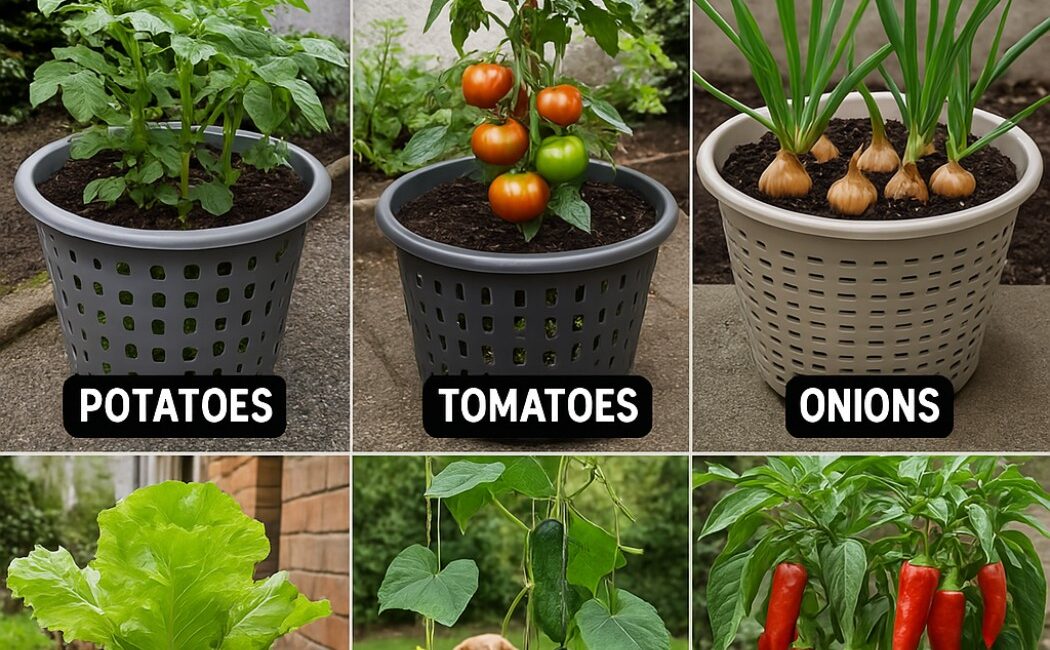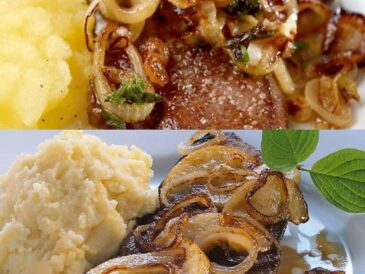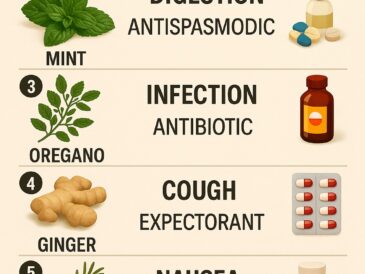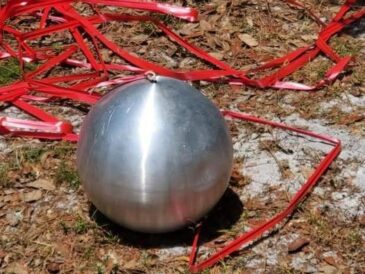- Succession sow every 2 weeks for ongoing harvest; 6–8 plants per basket.
Watering:
- Keep evenly moist; lettuce dislikes drought and heat-induced bolting.
Light:
- Partial shade preferred in hot climates to prevent bitter bolt.
Harvest:
- Cut outer leaves for cut-and-come-again; full heads when size desired.
4.5 Cucumbers: Vertical Vines
Varieties: Mini slicing, pickling cucumbers, bush types.
Planting:
- Sow 2–3 seeds at the base of a trellis, 1 inch deep. Thin to strongest 1 plant.
Support:
- Provide a trellis or mesh; cucumbers will climb, saving space.
Watering:
- Consistent moisture—mulch base to conserve water.
Fertilizing:
- High potassium feed at flowering (0-10-10).
Harvest:
- Pick regularly at 6–8 inches or desired size to encourage more fruiting.
4.6 Peppers: Sun-Loving Pods
Varieties: Bell peppers, jalapeños, habaneros.
Planting:
- Transplant seedlings after last frost; bury up to the first true leaves.
Spacing:
- 2–3 plants per large basket, 1 plant per small.
Watering:
- Moderate—allow top soil to dry slightly between waterings.
Feeding:
- Balanced fertilizer monthly; supplement with calcium (crushed eggshells) to prevent blossom end rot.
Harvest:
- Harvest when fruit are firm and fully colored; green or change stage.
5. Watering, Feeding, and Maintenance
Irrigation Strategies:
- Self-Watering Add-On: Place a 1 liter water bottle with holes as a wick near roots.
- Drip System: Snap-on drip stakes connected to a timer.
Fertilization Schedule:
- Week 0: Incorporate slow-release fertilizer.
- Week 4: Side-dress with compost or fish emulsion.
- Week 8: Apply balanced water-soluble feed.
- Thereafter: Feed every 2–4 weeks depending on crop.
Pruning & Training:
- Tomatoes: Pinch suckers, remove lower leaves.
- Cucumbers: Train vines upward, remove yellowing foliage.
- Peppers: Remove early flowers to boost root growth in young plants.
6. Pest and Disease Management
Common Pests:
- Aphids, whiteflies, slugs, cutworms.
Preventative Measures:
- Introduce beneficial insects (ladybugs).
- Use floating row covers.
Organic Remedies:
- Neem Oil Spray: 2 Tbsp neem oil + 1 tsp dish soap per gallon water.
- Diatomaceous Earth: Sprinkle around base for slugs.
7. Harvesting and Post-Harvest Care
Potatoes: Lift baskets, collect tubers, brush off soil, cure in cool dry place.
Tomatoes & Peppers: Gently twist off, store at room temperature.
Cucumbers: Refrigerate in perforated bag.
Lettuce & Onions: Remove excess leaves, store lettuce in damp paper towel in fridge, onions cure then store in mesh bag.
8. Seasonal Considerations and Successive Cropping
Spring: Potatoes, onions.
Summer: Tomatoes, peppers, cucumbers, lettuce in partial shade.
Fall: Leafy greens, second planting lettuce.
Winter (mild climates): Overwinter onions, raised tunnel with plastic.
9. Advanced Tips and Tricks
- Mycorrhizal Fungi Inoculant: Boost root health.
- Companion Planting in Basket: Marigolds for pest deterrence.
- Water Recycling: Place saucer beneath basket to catch runoff and pour back.
- Solar-Powered Fan: Increase airflow in enclosed spaces.
10. Frequently Asked Questions
- Can any laundry basket be used? Prefer plastic, UV-resistant, sturdy.
- How long does one basket last? Replace soil annually or refresh with compost.
- Will baskets crack in winter? Insulate or bring indoors.
11. Conclusion: Embrace the Laundry Basket Revolution
Repurposing a laundry basket for growing vegetables is an ingenious, eco-friendly, and wildly satisfying garden hack. With minimal investment and space, you can cultivate a variety of produce—potatoes, tomatoes, onions, lettuce, cucumbers, and peppers—all from a humble basket. Experiment with crop rotations, successive sowing, and companion planting to keep your laundry basket garden flourishing season after season. Happy gardening!




